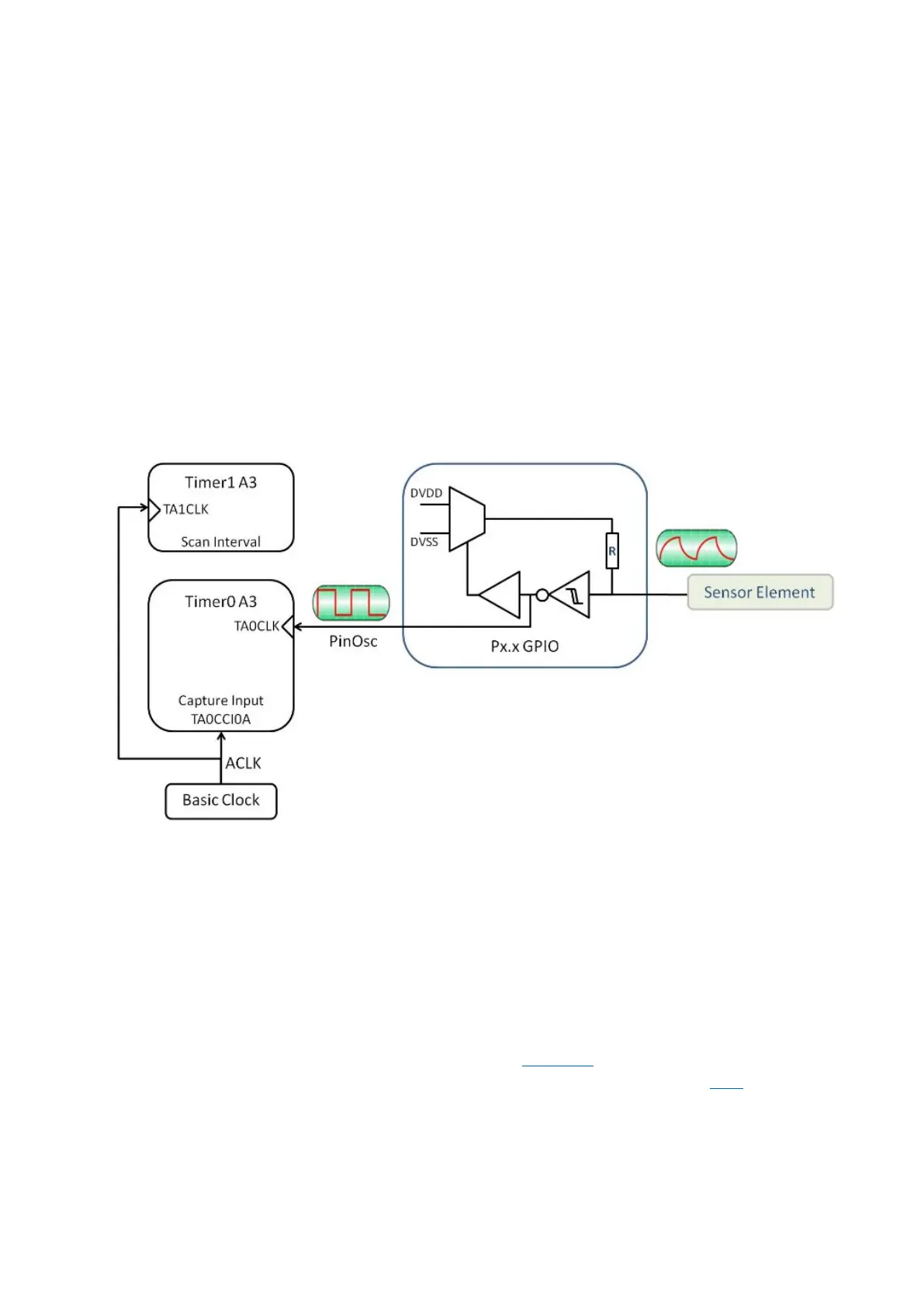388
Capacitive Touch Overview
Capacitive touch sensing technology is nothing new at present. Cell phones, smartwatches, tablets,
portable music players, and even many home appliances that you can name no longer have
mechanical touch keys/switches/buttons/variables. All such switching elements have been replaced
by more smart and elegant capacitive touch sensors. At present due to this trend even the tiniest new
generation microcontroller has capacitive touch sensing capability. When it comes to TI micros, this
trend seems to explode to a whole new level.
I haven’t seen so far, any TI MCU without capacitive touch feature. Almost all digital I/Os can be used
for capacitive touch as there is no specific dedicated I/Os for such implementations. This makes
capacitive touch sensing easy in terms of hardware design. Designing capacitive touch sensors is
another story.
In MSP430s, capacitive touch sensing requires two separate timers. These timers create independent
time bases and these time bases are compared against each other. One of these time bases is fixed
while the other is dependent of the value of touch sensor’s capacitance. When a touch is detected,
capacitance changes. This creates a significant difference between the time bases which otherwise
remains fairly constant. This is how a touch is detected. This is also a mean to measure capacitance
other than touch sensing.
For making all these tasks simple and for rapid development, TI has provided a dedicated Hardware
Abstraction Layer (HAL) library for capacitive touch sensing. Use TI’s Resource Explorer to download
code examples and library files. Programmer’s Guide SLAA490D discusses implementation of
capacitive touch sensing in terms of coding, hardware combinations and others. This page is also an
equally important one. Apart from these, there are good literatures from TI that discuss tons of
valuable info about capacitive touch sensing technology – from hardware designs to implementation
methods.
